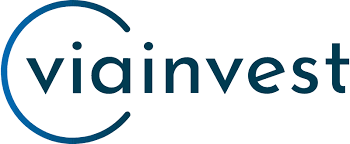Loans
Veteran Home Loans: How They Work and Who is Eligible

Wells Fargo Mortgage Review [2021]: Lots of Options, But Are They Right for You?
Buying a home is likely one of the most significant financial transactions you’ll ever make. Houses aren’t inexpensive, though. In fact, most people have to take out a mortgage to finance a home purchase because of the high cost.
When they start the process, most aspiring home-buyers know they need to line up a mortgage first. Without a mortgage, they can’t afford to buy a home.
One specific kind of mortgage, a veteran home loan, could help military families and service members with the home-buying process.
Here’s what potential borrowers need to know about what veteran home loans are and how they work.
In this article
- What is a VA loan?
- How does a VA loan work?
- VA loan benefits
- Types of VA home loans
- Purchase loan
- Native American Direct Loan (NADL) program
- Interest Rate Reduction Refinance Loan (IRRRL)
- Cash-out refinance
- How to get a VA home loan
- FAQs
- Bottom line
What is a VA loan?
A VA loan gets its name because it is a mortgage loan that is usually backed by the U.S. Department of Veterans Affairs (VA). The VA guarantees a portion of the loan making it less risky for private lenders to fund you with money. Because of this, lenders can offer special terms and other benefits to assist qualifying applicants. In rare cases, you may work directly with the VA instead of a traditional mortgage lender.
Servicemembers, veterans, and surviving spouses usually qualify for veteran home loans, but we’ll dive into the specific eligibility requirements later in this article.
How does a VA loan work?
A VA mortgage loan follows particular VA loan guidelines rather than the conventional mortgage or FHA mortgage guidelines other programs follow.
Most major mortgage companies may offer VA loans, but that isn’t always the case. According to the VA, the biggest VA loan lenders of the 3rd quarter of 2021 included Freedom Mortgage Corp., Quicken Loans, and Veterans United Home Loans.
You can learn more by reading our Freedom Mortgage review or Veterans United Home Loans review.
Thankfully, VA loans are normally easier to be approved for than traditional mortgages. This is because the VA will back a percentage of the loan amount. Essentially, this VA backing guarantees to the private lender that the VA will cover that amount of the loan if you default. This lowers the risk for lenders, allowing them to pass on benefits such as no to low down payments and lower interest rates.
Technically, the VA home loan program doesn’t limit the size of mortgage you can take out for most qualifying individuals. That said, lenders usually have their own home loan limits that apply to these loans.
A VA home loan isn’t a one-time benefit, either. While you can typically only have one VA loan at a time, you could apply for another VA home loan after paying off your original loan over time or by selling your home.
VA loan benefits
VA loans work like traditional mortgages in the sense that they give you a mortgage to fund a home purchase. The good news is VA loans may offer several benefits not generally seen on a conventional loan, including the following:
- Guaranteed by the VA: The VA guarantees a portion of your loan. This means if you default, the lender can make a claim to recover a part of the funds in default.
- No down payment requirement: You might not have to provide a down payment when taking out a VA mortgage because of the VA guaranty.
- No private mortgage insurance requirement: You normally have to pay private mortgage insurance (PMI) if you don’t make a down payment as part of the mortgage process. The VA guaranty can help you avoid this costly insurance.
- Limited closing costs: To protect veterans, VA loans limit the costs a lender can charge as part of the closing process. In particular, it limits the fees a lender may charge to 1% of the loan amount.
- No prepayment penalty: VA loans do not have prepayment penalties. This means you can pay off the loan early and save money on interest without having to pay costly penalties for doing so.
- Loans may be assumed in certain instances: VA loans may be assumed by someone buying your home if they meet credit and income requirements, assume all mortgage obligations, and pay a funding fee. You’ll need to receive a release of liability from the lender to avoid issues from the person assuming the loan potentially missing monthly payments, though.
To secure these benefits, VA loans may require you to pay a funding fee. The funding fee may vary based on the loan type, amount of the loan, down payment amount, and whether it’s the first time you’ve used a VA loan or not. You can either pay this fee as part of your closing costs or finance the fee by including it in your mortgage amount.
For purchase and construction loans using a VA loan for the first time, you must pay fees based on your down payment amount:
- Down payment of less than 5%: 2.3% fee
- Down payment of 5% or more: 1.65% fee
- Down payment of 10% or more: 1.4% fee
For purchase and construction loans using a VA loan after the first time, fees are as follows:
- Down payment of less than 5%: 3.6% fee
- Down payment of 5% or more: 1.65% fee
- Down payment of 10% or more: 1.4% fee
Cash-out refinance loans have varying fees depending on whether it’s your first use of a VA loan or not:.
- First use: 2.3% fee
- After first use: 3.6% fee
Native American Direct Loan (NADL) fees vary on whether you’re taking out a purchase or refinance mortgage:
- Purchase mortgage: 1.25% fee
- Refinance mortgage: 0.5% fee
Fees for other types of VA loans are as follows:
- Interest Rate Reduction Refinancing Loans (IRRRLs): 0.5% fee
- Manufactured home loans: 1% fee
- Loan assumptions: 0.5% fee
In some cases, you might be able to avoid paying the VA funding fee. If you qualify for one of the following exceptions, you won’t have to pay:
- You currently receive VA compensation for a service-connected disability.
- You’re eligible to receive VA compensation for a service-connected disability but are receiving retirement or active-duty pay instead.
- You’re the surviving spouse of a veteran who died in service or from a service-connected disability or who was totally disabled, and you’re receiving Dependency and Indemnity Compensation (DIC).
- You’re a service member with a proposed or memorandum rating saying you’re eligible for compensation due to a pre-discharge claim.
- You are a service member or active duty member who provides evidence of receiving a Purple Heart.
Types of VA home loans
The VA offers several home loan programs for qualified veterans. There might be a program for you to consider, depending on your circumstances.
Purchase loan
A purchase loan is one of the most common types of VA-backed loans. According to the VA, these loans can be used to buy, build, or improve a home. The home you’re buying will have to be your primary residence.
These loans can be used for single-family homes with up to four units, a condo in a VA-approved project, buying and improving a home, buying a manufactured home or lot, or building a new home. You can also use a purchase loan to make changes or add new features to make your home more energy efficient.
Native American Direct Loan (NADL) program
The Native American Direct Loan (NADL) program allows veterans who are Native American or who have a Native American spouse to apply for funding. The loan program is only for buying, building, or improving a home on federal trust land.
To qualify, your tribal government must have a Memorandum of Understanding with the VA that details how the NADL program will work on its trust lands. You must also live in the home you use the loan for and meet other standard requirements.
You can reuse this home loan benefit in the future, and the funding fees with these loans are lower than other VA purchase loan types.
Interest Rate Reduction Refinance Loan (IRRRL)
The Interest Rate Reduction Refinance Loan (IRRRL) allows current homeowners to refinance an existing VA-backed mortgage with a new loan. To qualify, you have to currently live or have previously lived in the home the loan will cover.
Mortgages Demystified: Your Questions Answered and Home Loan Terms Defined
This program essentially allows you to refinance your loan to a lower interest rate if current mortgage rates are lower and you qualify.
Cash-out refinance
You can use a cash-out refinance loan for two purposes. You could use it to refinance a non-VA loan into a VA loan. Or you could refinance an existing loan to take cash out of your home equity. You must live in the home you’re refinancing with the loan to qualify.
To cash out, your home’s value must exceed the current loan amount and any fees you plan to roll into the new loan. You can use the funds from the cash out for anything you wish, such as paying for school or making home improvements. This type of refinance is also a common method of debt consolidation for veterans.
How to get a VA home loan
1. Determine your VA loan eligibility
The first thing to do is check if you’re eligible to apply for a VA home loan. You can do this by acquiring your Certificate of Eligibility (COE). This certificate shows lenders that you qualify to apply for a VA-backed loan.
To get your COE, you must meet certain military service requirements. These requirements vary based on how and when you served:
- Active duty members must have served for at least 90 continuous days, while veterans have varying requirements based on when they served.
- National Guard or reserve members must have at least 90 days of active-duty service between August 2, 1990, and the present.
- You may also qualify if you have six creditable years in the Selected Reserve or National Guard or you meet several other requirements, such as being discharged honorably.
People who do not meet minimum service requirements still may qualify for a COE if they were discharged for:
- Hardship
- Convenience of the government (but you must have served at least 20 months of a two-year enlistment)
- Early out (while serving at least 21 months of a two-year enlistment)
- Reduction in force
- Certain medical conditions
- Service-connected disability
Spouses might also qualify for a VA-backed loan if they are a surviving spouse of a veteran or a veteran missing in action or held as a prisoner of war.
Other rare qualification opportunities include being a U.S. citizen and serving in the Armed Forces of a government allied with the United States in World War II or serving as a member in specific organizations such as a public health service officer; a cadet at the United States Military, Air Force, or Coast Guard Academy; a midshipman at the United States Naval Academy; an officer of the National Oceanic and Atmospheric Administration; or a merchant seaman during World War II.
Unfortunately, people who have received an other than honorable discharge may not be eligible for VA benefits, including home loans for veterans.
2. Prepare for loan qualification
To prepare for the VA loan process, start by getting your COE. You can apply for it by visiting eBenefits.va.gov.
Once you’re sure you’re eligible for a VA-backed loan, make sure your finances can handle the mortgage. In general, knowing your credit score and debt-to-income ratio (DTI) is a good idea. Some lenders might have minimum credit score requirements. But, technically, there is no official requirement for the VA-backed loan program.
The VA specifies that your DTI shouldn’t exceed 41%, but it still allows lenders to consider and approve loans at a DTI of above 41% under certain conditions. An example of a condition that could help is having additional money in the bank. Having funds in reserve gives lenders some peace of mind that you could make mortgage payments in the coming months.
3. Shop for lenders and get preapproved
When you’re shopping for a home, sellers want to know you’re serious about purchasing. One way to do this is to get preapproval for a mortgage. Essentially, this helps a home seller feel comfortable that you’ll be able to get formally approved for a mortgage.
To get preapproval, you don’t go through the official underwriting process, but you disclose your income, debt, employment history, assets, and credit score. Based on this, a lender issues a preapproval letter.
You don’t have to use the lender you get preapproved through to take out your mortgage, though. Once you have an offer accepted on a home, you can shop around with the best mortgage lenders to find the one that offers you the best overall VA home loan.
It’s best to compare loan offers with the same general terms to make an apples-to-apples comparison. Then, choose the one that works best for your situation.
4. Buy or refinance your house
Buying or refinancing your house with a VA loan can be different from a standard mortgage. Homes purchased by VA loans must meet certain specifications as determined by the loan program.
This means a special VA appraisal must be done that includes inspecting the property for minimum requirements. If the home does not conform to these rules before closing, you can’t use a VA loan to purchase the house. Make sure you plan ahead so that something as simple as a broken window doesn’t derail your home purchase.
FAQs
Is a VA loan really worth it?
VA loans offer several benefits you might not find with a traditional home loan that could make them worth considering. These benefits could include no down payment requirement, competitive interest rates, limited closing costs, and no private mortgage insurance. Even so, you might qualify for other mortgages that make more sense depending on your specific situation, so it’s best to consider all your loan options before moving forward with a mortgage.
Can you have two VA loans at once?
It is possible to have two VA loans on two properties at once in some relatively rare circumstances. This could happen when you get assigned to a new military duty station but don’t want to sell your old home. If you have a remaining entitlement, you may be able to take out another VA-backed mortgage for another home purchase. However, you still have to meet the income and credit qualification standards, which may prove difficult depending on your financial situation.
How do I get a home loan from the VA?
Technically, you do not take out a loan from the VA in most instances. Instead, you work with a private lender to take out a mortgage that the VA backs. To get started, check to make sure you’re eligible for a VA loan. Then, start comparing lenders that offer VA-backed mortgages.
Can I be denied a VA home loan?
Yes, you could be denied a VA home loan even if you qualify to apply for a VA mortgage. While a VA home loan does provide benefits, guaranteed acceptance is not one of them. You must still meet a lender’s credit, income, and other financial requirements to get approved for a VA home loan. Additionally, the property you’re applying for the loan for must meet the VA’s requirements.
Bottom line
If you’re looking for ways to save money as a military member, you should be aware that a veteran home loan could save you a ton when purchasing a home. Your VA loan benefits and costs will vary depending on your specific situation, your lender, and the type of loan you take out.
As always, it makes sense to consider all your options when undertaking one of the most significant purchases in your life. Make sure you understand all the basics of how to get a loan before you start your home-buying process.
And after you’re done purchasing a home, don’t forget to take advantage of other benefits you may qualify for as an active military member, such as special military credit card benefits. These credit card benefits could help you save money on anything from home furnishing costs to travel expenses.
Claim your military benefit
 See if you’re eligible
See if you’re eligible
Veterans United Home Loan Benefits
- Take advantage of your military service
- VA loan lets you buy or refinance for the maximum that you qualify for
- Credit score of 640 or greater required
- 4.8/5 star rating with 260,000+ reviews
See if you’re eligible
How Does Refinancing Work (And When It Makes Sense)
Unmasking Online Deception: An In-Depth Social Catfish Review
Purple Garden Psychics – ($1/Min) FREE Trial Offers, Real Experience & Benefits And More

Refinancing an Auto Loan: How to Know If It’s a Good Idea

Reverse Mortgages Pros and Cons: Ripoff or a Good Idea?

8 Ways it Just Got Easier to Achieve Student Loan Forgiveness
Unmasking Online Deception: An In-Depth Social Catfish Review

Orchard Bank Credit Cards | NOT a Scam!

PrivacyGuard Review

How to choose where to study as an international student


